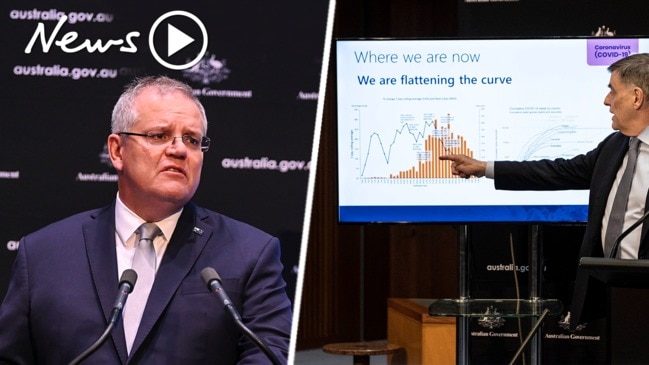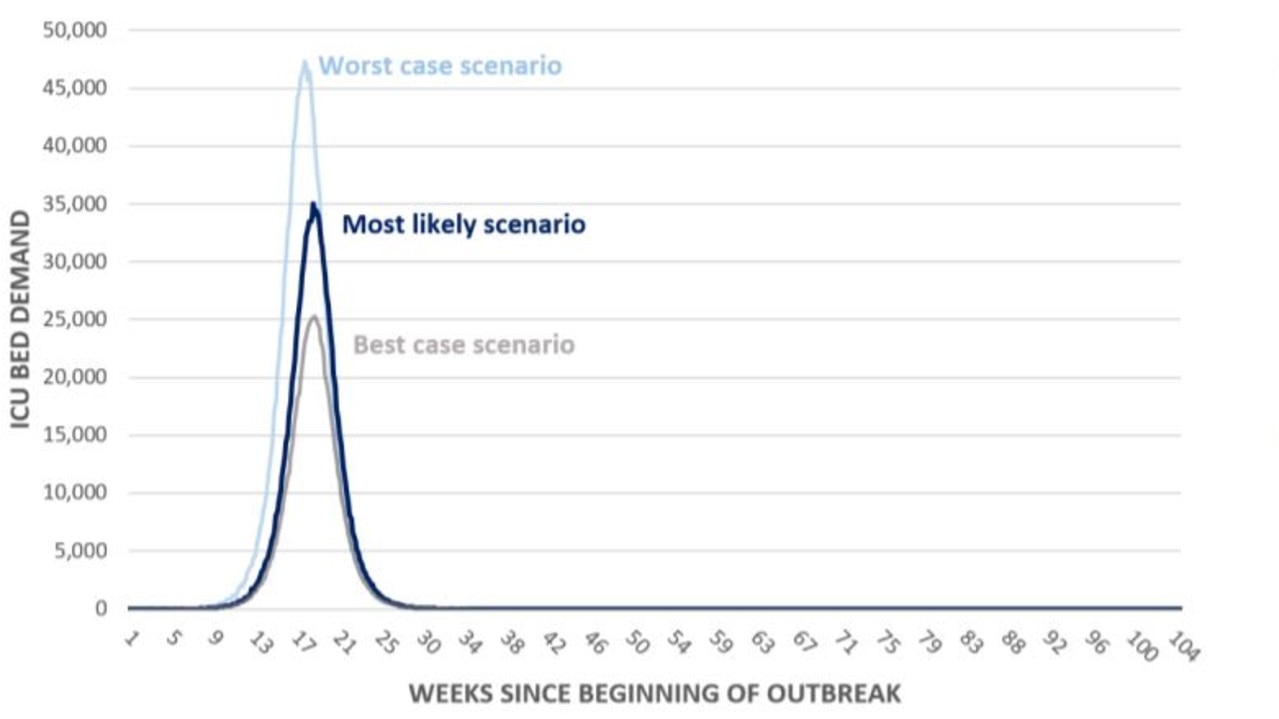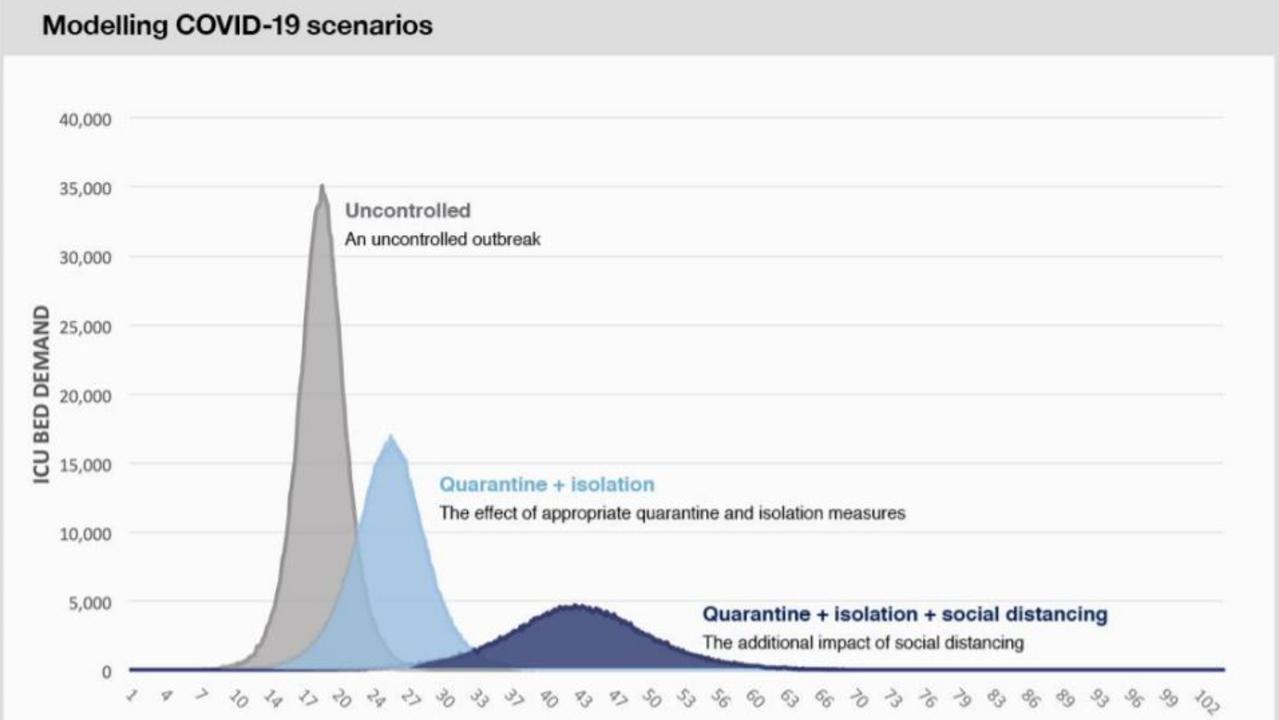The horrifying figures that show why Australia is in lockdown
Modelling released by the Morrison Government has provided a reality check for Australians, showing just how bad things could have got.

Australians have been given an insight into how bad the coronavirus outbreak could have become if the Morrison Government had not acted.
Prime Minister Scott Morrison revealed on Tuesday details of the early modelling his government used to inform its response.
Mr Morrison stressed the “highly theoretical” modelling did not predict what would happen in Australia, but instead presented a “worst-case” scenario based on overseas data.
“What is absolutely clear is that if we relaxed any of the current measures, that would turn into an explosive outbreak driven by community transmission and we would be in a very poor situation very quickly,” University of Melbourne professor James McCaw said, The Age reported.
Measures Australia has put in place have already reduced infection rates to a much lower rate than predicted.
Two papers were released on Tuesday, both done by The Doherty Institute, and neither have been subject to peer review yet.
One of the papers looked at possible infections from overseas, and the other used modelling initially developed in preparation for a influenza pandemic to simulate impacts on Australia’s health system.
In particular it highlighted the pressure that would be put on Intensive Care Unit beds without the strict social distancing measures that have since been introduced.
Several scenarios were modelled, including an “incredibly unlikely” worst-case scenario where nothing was done to stop the spread of coronavirus in Australia.
This would see 23 million people get infected all at once and would have completely overwhelmed the hospital system. Only 15 per cent of people who needed ICU care would have been able to access a bed.
Another scenario looked at whether Australia could have just stopped at isolating sick people and quarantining others likely to be infected.
An estimated 67.5 per cent of Australians would have been infected with COVID-19 in this scenario, and only 30 per cent of those who needed ICU care would have been able to access this.
With such a shortfall, even dramatically increasing the number of ICU beds would not have helped.
The paper noted that if ICU beds were doubled, this would still only meet between 10 and 30 per cent of demand. Increasing bed numbers by five times would also fall short, covering between 20 and 40 per cent of demand.
RELATED: Follow the latest coronavirus updates
RELATED: Experts reject calls for lockdown to be reversed
“Case isolation and contact quarantine alone will be insufficient to keep clinical requirements of COVID-19 cases within plausibly achievable expansion of health system capacity,” the report says.
In order to ensure 100 per cent of those who need ICU care would have access to a bed, it suggested that social distancing restrictions would be required.
“Social distancing measures to suppress disease are required to save lives,” the report said.
“A combination of case-targeted and social measures will need to be applied over an extended period to reduce the rate of epidemic growth.”
However, it also noted that the “social and economic consequences” of such measures would limit how long they could be kept in place.
“In reality, it is likely that the stringency of imposed controls, their public acceptability and compliance will all vary over time,” the report said.
It said further work would look at how the measures could be varied, to figure out “exit strategies” for relaxing stringent lockdown conditions.
RELATED: Australia faces disturbing decision on how to end the epidemic
RELATED: One mistake could undo Australia’s hard work
RELATED: Outbreak worrying authorities the most


The report also noted that the modelling was limited by ongoing uncertainty around the true disease “pyramid” for COVID-19, and the lack of information about why some people get a more severe form of the disease.
The modelling was based on international data from both the Chinese experience and other countries.
Mr Morrison said on Tuesday the modelling proved the theory of “flattening the curve” and that measures Australia had taken could make a difference.
“Indeed, that is what we’re experiencing here in Australia,” he said. “We are on the right track.”
“National Cabinet of course will be seeking further modelling work to be done that does incorporate Australian responses.”
However, the small number of cases in Australia means there will not be a big case base to do that modelling.
“So the National Cabinet fully understands the limitations of this work,” he said.
Chief Medical Officer, Professor Brendan Murphy said authorities now had data on nearly 6000 Australians and it was hoped there would be some useful insights in the next few weeks.
“In terms of having some meaningful data, I would say it’s a matter of weeks before that would be in a useful form.”
However, he noted that there were less than 100 people in ICU in Australia at the moment and less than 40 people on ventilators, which is “quite a low rate of serious disease”.
“Our current case rate is very, very low. Every death is a tragedy, but our death rate is one of the lowest in the world so far,” he said.
“We don't know what it will be as the disease progresses, but we are reassured to some extent about that.
“The most important message from this model is we know that the tools we are using do work, and we can scale them up and down as necessary, and the data we have so far suggests that they are working.”




